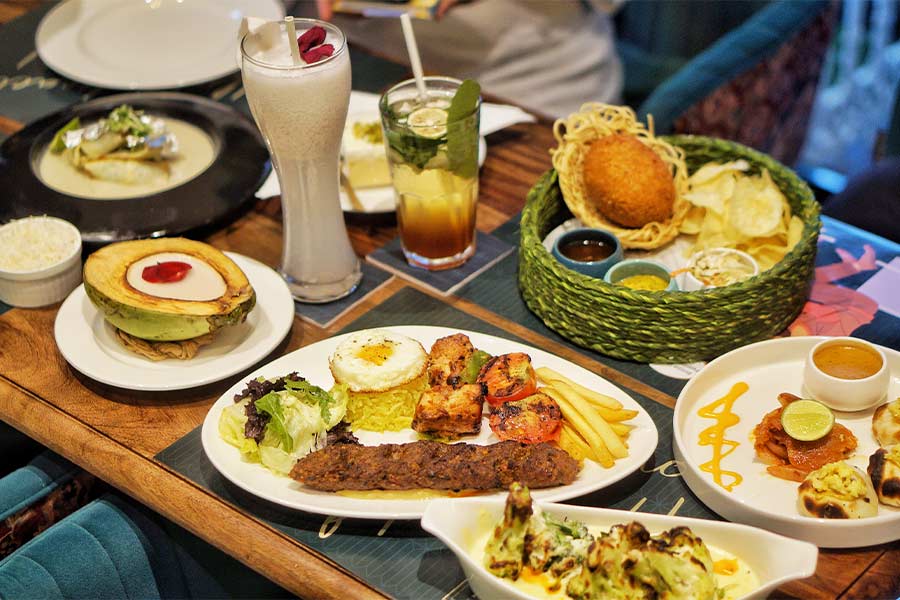Sweet, salty, spicy, crunchy and definitely irresistible — for decades, the ubiquitous red or orange packets of chanachur by Mukharochak have been synonymous with tea time and adda for Bengalis.
Mukharochak chanachur has been an inseparable part of every Kolkatan’s life for more than seven decades. As Mukharochak turns 75 years old, My Kolkata takes a trip down its golden past, present and future. Chanachur is a staple Bengali snack at majority of the households in the state. A bowl of muri makha tossed with chanachur and other condiments is sort of a legacy — the kind of food with which families and friends gather int he evening to catch up. And this chanachur is often Mukharochak.
A modest beginning
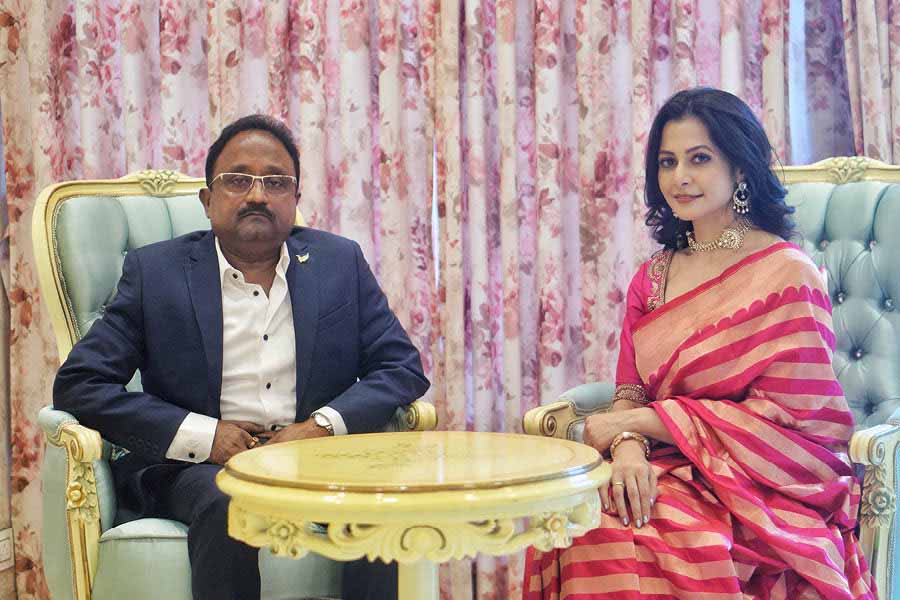
Owner of Mukharochak, Pranab Chandra with Koel Mallick, the brand ambassador
Around 1950, Nirmalendu Chandra shaped the beginnings of the brand from a small shop near Tollygunge tram depot. The chanachur was made and packed in the same shop. Most of it was done by hand. As the popularity of the chanachur grew, it became available at other shops as well. Consequently, the production unit needed expansion, leading to the establishment of a sprawling six-acre factory at Dakshin Gobindapur, Baruli, in 1970.
When Nirmalendu Chandra’s son Pranab Chandra took over the business, he conducted extensive research on ingredients. He took the local brand to the international market by maintaining high standards of quality check and hygiene, expanding the product range across various categories and ensuring the well-being of those employed at his factory. “Our aim has been to provide the best quality products and the authentic taste that we all have grown up eating. It was also the vision of my father and grandfather, Panchanan Chandra, whose photo you see on our products.”
Expanding the product range

The sprawling Mukhorochak Bagan Bari encompasses six acres of land, housing the factory on one side, while the rest is allocated for guest houses and gardens rented out as picnic spots and (right) chanachur production in process Courtesy Mukharochak
Pranab Chandra, during his research, realised there was a need to expand the product range and venture into premium and other niche markets. Alongside their original Sweet and Sour Chanachur (the tok-jhali-mishti mix in the orange packet) and Special Papri Chanachur (red packet), they introduced Salty Chanachur, a plain salted variant, and a non-spicy chanachur. For individuals with a high spice tolerance, Mirchi Jhal Chanachur was launched. Additionally, a premium chanachur category was launched, featuring products such as 7pm Chanachur, Dhanya Badam and more. The 7pm Chanachur came with more ingredients in comparison to the Special Papri Chanachur. Khatta Meetha Chanachur and 100% Love with cashew, raisins and selected spices are also a part of the premium category now. The Aath Bhaja, launched on the occasion of 75 years of celebrations, is also a product in this category.
Pranab Chandra stated, “We have always thought about our customers, their needs and likings. We introduced Aath Bhaja for people who want to eat something tasty yet healthy. This product comprises eight ingredients, including pulses such as chana dal, green gram, urad dal, green peas, chickpeas, lobiya, etc. We also have products that are party starters. There are products like Chal Bhaja, Masala Muri for tiffin. We have products that can be carried while travelling. So we diversified our products for everyone and for every occasion.”

Sourav Ganguly with Pranab Chandra on the sets of 'Dadagiri'
With more than 30 products in seven categories, Mukharochak has kept in mind the needs of their customer base. Sharing the history behind the creation of Chal Bhaja, Chandra said, “Once I went to Dadagiri, when Sourav Ganguly said, ‘Dada, amar jonno kichu ekta banan. Moshla chara, jeta shob shomoy khete pari’ (Please make something for me that is not very spicy and can be consumed anytime). So, I started brainstorming. Then we created Chal Bhaja which is sugar-free and has zero cholesterol. It is made with puffed Basmati rice, roasted gram and peanuts. Even the Diet Chiwra which is now also called Light Chiwra, is made for people who are health conscious.”

The Chal Bhaja was a result of Sourav Ganguly's request to Pranab Chandra
Inside the 'chanachur' factory
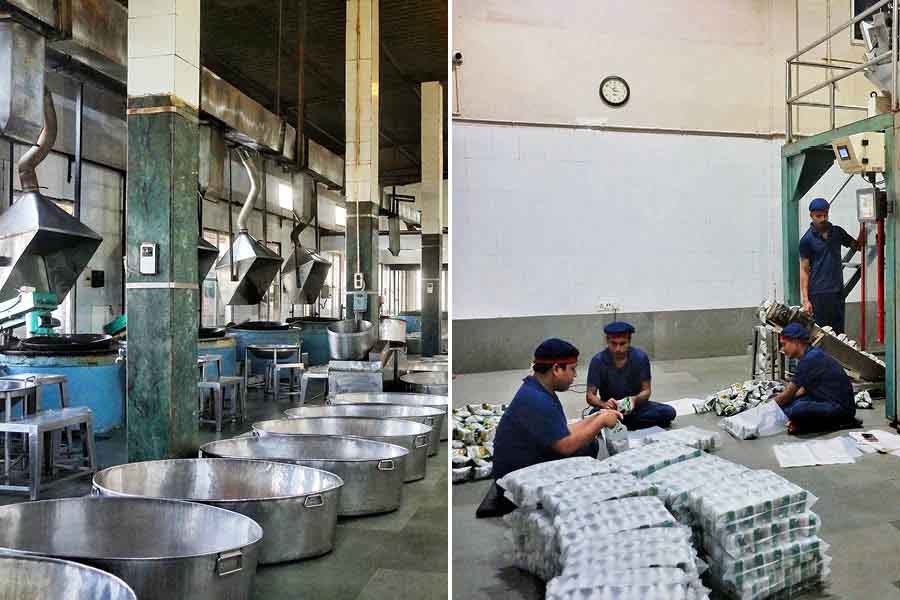
The kitchen area and the packaging unit
The sprawling Mukhorochak Bagan Bari encompasses six acres of land, housing the factory on one side, while the rest is allocated for guest houses and gardens rented out as picnic spots. From processing raw materials and frying ingredients to packaging and dispatching, all operations happen within this gated compound. According to the owners, the factory maintains top-notch quality control.
“I go around the factory and check the final product of the batches myself. Anything not meeting our standards doesn't reach the end consumers,” said Chandra. The secret behind the success of the brand lies in the products and their makers. The 200+ workers in the factory meditate every day before beginning their work. Pratik Chandra, on the occasion of 75th anniversary celebrations, said, “The well-being of our workers is paramount. If they are healthy and happy, the production will be good automatically.”
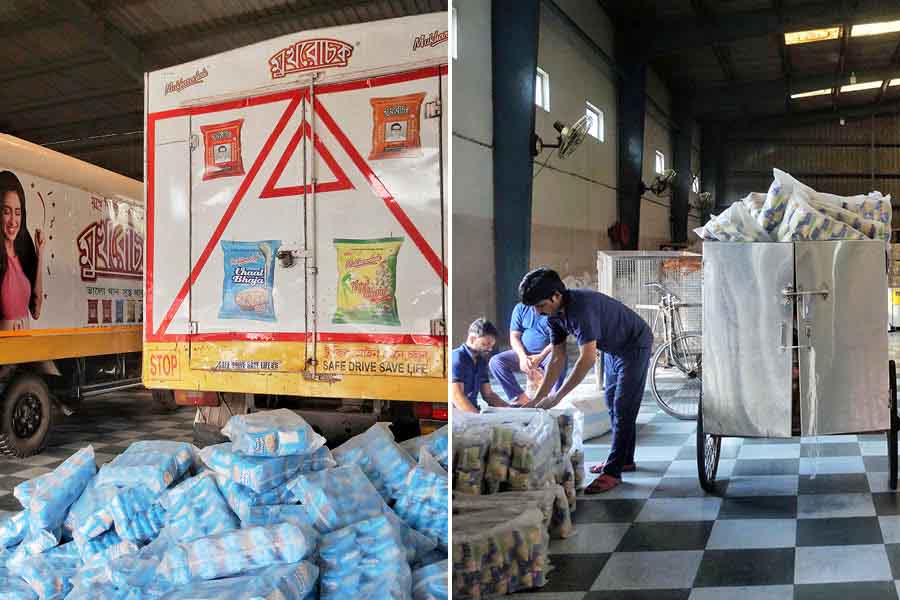
The despatch unit in the factory
The factory has a raw material storage facility, a kitchen area, a quality check facility, a packing zone and a dispatch area. In the kitchen area, the bundi, gathiya, papri etc are made and fried in temperature controlled oil in large woks. These ingredients are then mixed with spices and undergo a quality check before packaging. The brand operates its own trucks to distribute the products to various distributors across the city.
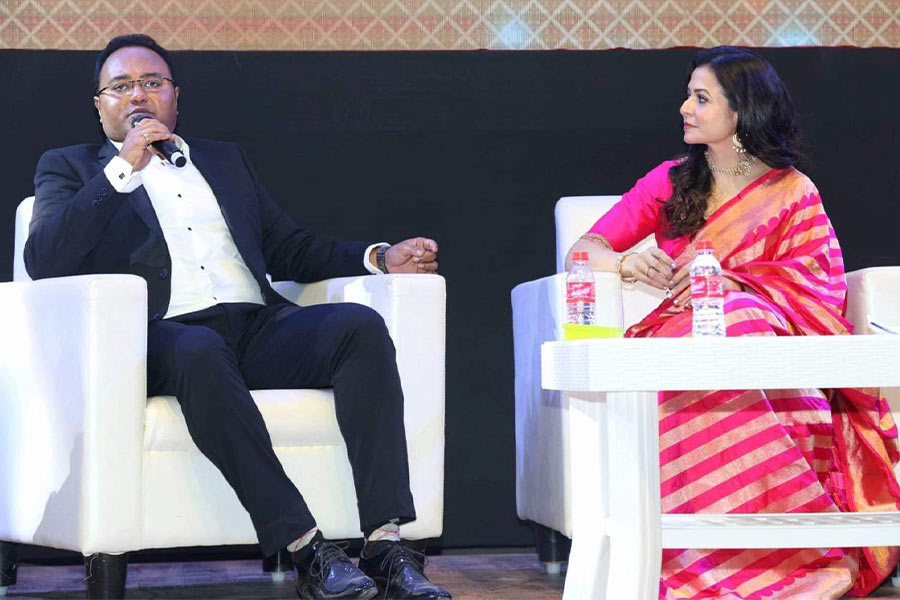
Pratik Chandra with Koel Mallick at Mukharochak's 75 years celebration event
Pranab’s son, Pratik Chandra, now serving as the director and business head of Mukharochak, has been actively engaged in expanding the business both online, catering to international and pan-India markets. Mukharochak’s presence is prominent on various e-commerce platforms such as Big Basket, Instamart and Blinkit. As a proud scion of the Chandra family, Pratik not only directs the business but also takes charge of factory operations and ensures the welfare of the workers.
What makes it most loved…
Other branded mixtures in fancy packaging are available in the market. However, there is a distinct difference in taste. Mukharochak has a very Bengali flavour that one would get in a good local chanachur. However, loose chanachur often fails to meet these standards.
Arpita Das, a resident of Thakurpukur, spoke to My Kolkata about her family's switch to Mukharochak from local chanachur. “For a long time we used to buy chanachur from local shops nearby. Sometimes it was good, sometimes it turned out to be rancid. One day, a family friend brought a packet of Mukharochak to our house, and everyone loved it. Since then, we have been purchasing it, and there has never been any issue with the quality or taste.”
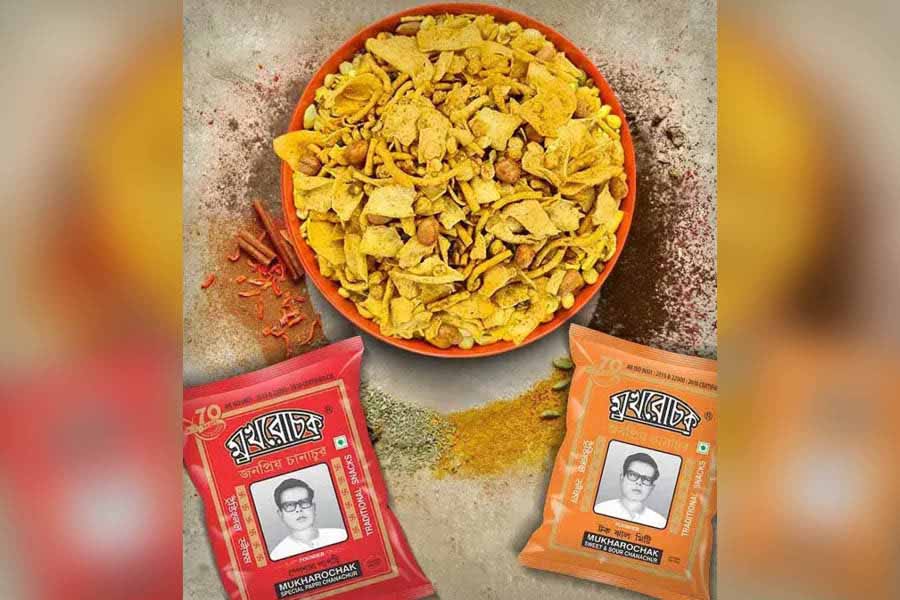
The two most popular varieties of chanachur — the first offerings from Mukharochak, which carry the photo of Pranab Chandra's grandfather
A big fan of Mukharochak, Abhimanyu Bose, who now resides in Germany, shared, “I cannot imagine leaving Kolkata without ensuring my suitcase is stocked with enough packets of Mukharochak. Thanks to its durable packaging, it consistently survives the over 24-hour plane journeys in a tightly packed suitcase. The Sweet and Sour flavour has been my utmost favourite amongst all the Mukharochak Chanachur variants available. I have never found the taste to be compromised. I’ve paired it with dal, butter and rice, khichuri, muri, in-between baguettes, within a buttered brezel (pretzel) or just with tea. Always in copious amounts.”

Koel Mallick is the current brand ambassador of Mukharochak
When quizzed, Koel Mallick, who is now the official brand ambassador of Mukharochak, said, “When we were young, Mukharochak was always a household staple. We used to enjoy Mukharochak in the evenings while watching TV. Whenever I felt down, I would grab a handful of chanachur, and my mood would instantly lift. Everyone in our house has their favourite product. My father prefers the orange packet (tok-jhal-mishti), while I like the red one (Special Papri Chanachur). So there’s always all kinds of Mukharochak products available at home. I am thrilled to be a part of a brand that is so close to our heart.”
According to multidisciplinary artiste Sujoy Prasad Chatterjee, chaa-chanachur is an inseparable pair. “It is wonderful how Mukharochak made its journey for the last 75 years. It is a significant part of the Bengali food legacy. For Bengalis, like Uttam-Suchitra is a great pair, Mukharochak Chanachur and evening tea too are inseparable.”
